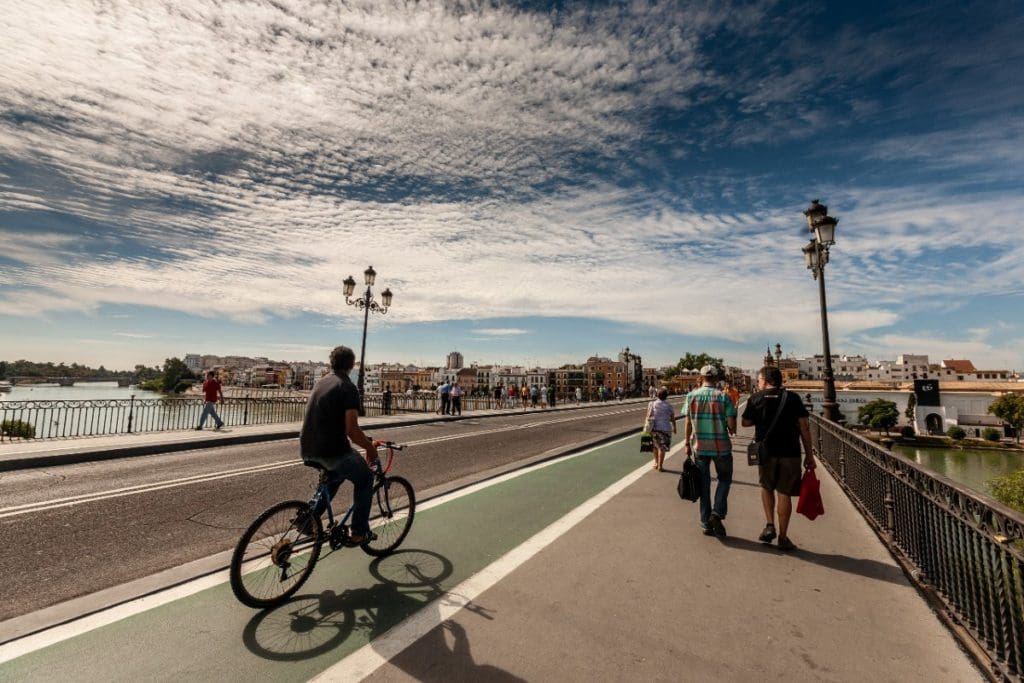Spain Drops Speed Limit to 30kph – Nationwide!

Madrid, Spain
It’s long been proven by multiple studies and expert reports that in order to minimise deaths of cyclists and pedestrians, the best speed limit for motor vehicles is 30 kph. At this speed 90% of cyclists and pedestrians survive a direct, front on impact with a motor vehicle. The fatality curve is quite flat below 30kph then sweeps steeply upwards until 60 kph, a common urban speed limit in Australia, at which the survival rate is approximately 10%, meaning the death rate is 90%.
Despite this overwhelming evidence, Australian state and local governments dither. Most do nothing, while a few implement tiny ‘trials’ of 30 kph zones. Often local governments are constrained from being more progressive by auto-centric state government road authorities.
Meanwhile Spain has joined the growing list of nations that are dropping speeds in urban streets to 30kph or equivalent in a bid to decrease the road toll and make local streets attractive for people on foot and bike.
The new limits will apply to about two-thirds of Spain’s urban roads.
The measure will be implemented on single-lane roads in each direction of travel while those that have two or more lanes in each direction of traffic will have their speeds limited to 50kmh.
Roads, where footpaths are the same height as the road, will be limited to 20kmh.
“The impact of the 30kmh zones will go beyond reducing deaths and serious injury,” explained Catherine Pérez, an expert from the Public Health Agency in Barcelona.
“It will also reduce the burden on the healthcare system, thanks to a fall in mild injuries, and will also affect the family, social and work impact of accidents even if the life of a person is not in danger.”
Recent changes in the way that people move around cities is also behind this change in restrictions. Increased habits of walking rather than using cars or motorbikes, as well as the popularity of cycling and electric scooters, have all had an influence.
“There is a phenomenon that was present before the pandemic,” explained Álvaro Gómez, the director of the DGT’s National Observatory for Road Safety.
“But now it has become even stronger and is here to stay: people go out more to walk.”
Gómez believes that the new rules will give local councils a tool by which they can consolidate the so-called ‘80-20’ model – 80% of vehicles should circulate on 20% of the streets, and vice versa.
Most of this article was first published by Bicycle Network
